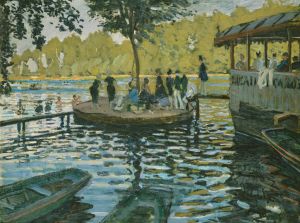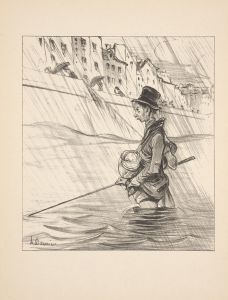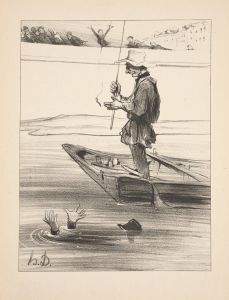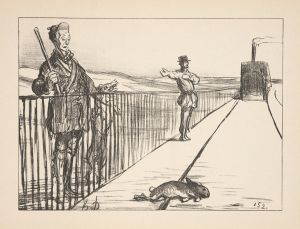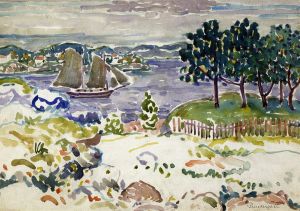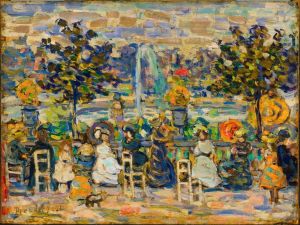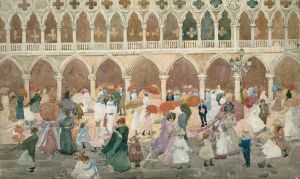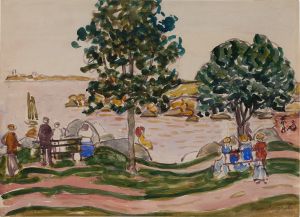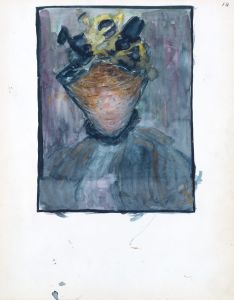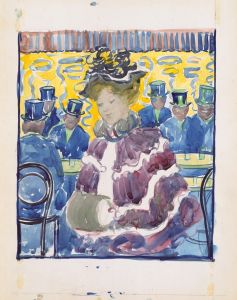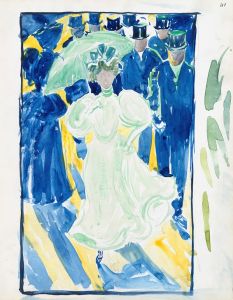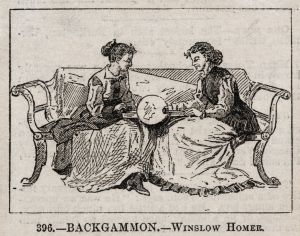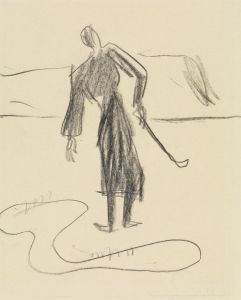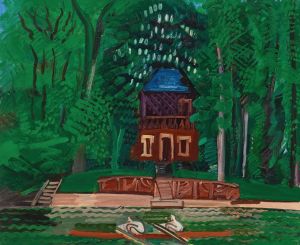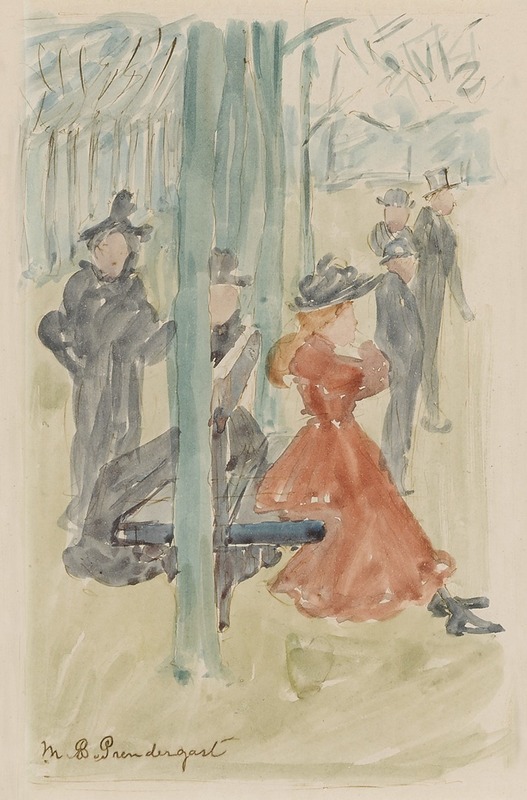
Park Scene
A hand-painted replica of Maurice Prendergast’s masterpiece Park Scene, meticulously crafted by professional artists to capture the true essence of the original. Each piece is created with museum-quality canvas and rare mineral pigments, carefully painted by experienced artists with delicate brushstrokes and rich, layered colors to perfectly recreate the texture of the original artwork. Unlike machine-printed reproductions, this hand-painted version brings the painting to life, infused with the artist’s emotions and skill in every stroke. Whether for personal collection or home decoration, it instantly elevates the artistic atmosphere of any space.
Maurice Prendergast's "Park Scene" is a notable example of early 20th-century American painting, reflecting the artist's unique style and contribution to the Post-Impressionist movement. Prendergast, born in 1858 in St. John's, Newfoundland, was a prominent figure in American art, known for his vibrant use of color and innovative compositions. He spent a significant portion of his life in Boston and later in New York, where he became associated with the group known as "The Eight," which included artists like Robert Henri and John Sloan. This group was instrumental in moving American art away from academic traditions and towards more modern, expressive forms.
"Park Scene" exemplifies Prendergast's fascination with leisure activities and urban life, themes that frequently appear in his work. The painting depicts a lively park setting, capturing the essence of a bustling public space filled with people enjoying a sunny day. Prendergast's use of watercolor and gouache on paper is characteristic of his style, which often involved layering colors to create a mosaic-like effect. This technique contributes to the painting's vibrant and dynamic appearance, drawing the viewer's eye across the canvas to explore the various figures and activities depicted.
Prendergast's work is often associated with the Post-Impressionist movement, which sought to expand upon the ideas of Impressionism by emphasizing more structured compositions and bold color palettes. In "Park Scene," Prendergast employs these principles through his use of flattened forms and rhythmic patterns, creating a sense of harmony and movement. The figures in the painting are stylized, with simplified shapes and outlines that suggest rather than define their forms. This approach allows Prendergast to focus on the overall mood and atmosphere of the scene rather than on individual details.
The influence of European art is evident in Prendergast's work, particularly the impact of his travels to France, where he was exposed to the works of artists like Paul Cézanne and Georges Seurat. These experiences informed his approach to composition and color, as seen in "Park Scene," where he balances the spontaneity of Impressionism with a more deliberate, structured arrangement of elements. Prendergast's ability to blend these influences with his own unique vision helped to establish him as a key figure in the development of modern art in America.
"Park Scene" is also notable for its depiction of social interaction and the democratization of public spaces, themes that were increasingly relevant in the rapidly urbanizing society of the early 20th century. The painting captures a cross-section of society, with people from various walks of life coming together in a shared environment. This aspect of Prendergast's work reflects the changing dynamics of American life during this period, as cities grew and public parks became important venues for leisure and socialization.
Maurice Prendergast's "Park Scene" remains an important work within his oeuvre and within the broader context of American art history. It showcases his innovative use of color and form, as well as his ability to capture the vibrancy of urban life. Today, Prendergast's paintings are held in high regard and can be found in major collections, including the Museum of Fine Arts in Boston and the Whitney Museum of American Art in New York, where they continue to be appreciated for their artistic and historical significance.





